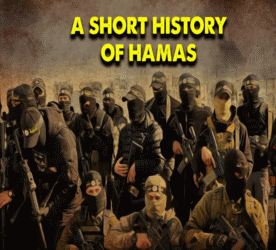What is Hamas? It is a question that arise every time fresh cross-firing between Israel and Hamas erupts.
The Palestinian-Israeli conflict, with its deep-seated historical roots, has given rise to numerous factions, movements, and organizations over the years.
Hamas, the acronym for Harakat al-Muqawama al-Islamiya or the Islamic Resistance Movement, is one of the most prominent and enduring entities within this tumultuous landscape.
In this comprehensive guide, we will delve deep into the multifaceted world of Hamas, exploring its historical background, complex ideology, organizational structure, and far-reaching impact on the Palestinian territories and the broader Middle East.
Read More: Israel Hit Hospital in Gaza: 300 Killed Instantly
I. Historical Origins: What is Hamas?
To comprehend Hamas fully, it is crucial to contextualize its emergence within the broader scope of the Israeli-Palestinian conflict.
This protracted struggle, characterized by competing nationalistic claims and fervent ideologies, serves as the backdrop against which Hamas came into being.
- The Israeli-Palestinian Conflict: Understanding the origins of Hamas necessitates a comprehensive grasp of the overarching Israeli-Palestinian conflict, a conflict rooted in historical disputes over land and identity.
- Founding Years: Hamas officially took shape in 1987 during the First Intifada, a Palestinian uprising against Israeli occupation. This section will delve into the conditions and dynamics that prompted its formation.
- Influence of the Muslim Brotherhood: A critical component of Hamas’s history is its ideological connection to the Muslim Brotherhood, a transnational Islamist organization. This association significantly shapes Hamas’s outlook and objectives.
II. Ideology and Objectives
Hamas’s foundation is firmly rooted in Islamic fundamentalism, which significantly informs its activities, principles, and aspirations.
- Islamic Fundamentalism: We will explore the religious underpinnings of Hamas, delving into its interpretation of Islam and how this influences its ideology and actions.
- Resistance and Liberation: Central to Hamas’s mission is the liberation of Palestine. This section will examine the various forms of resistance, including armed struggle, employed by the organization to achieve its objectives.
- Political Governance: Beyond resistance, Hamas seeks to establish a political and administrative presence in the Palestinian territories. We will analyze the organization’s governance strategies and political goals.
III. Organizational Structure
Hamas’s organizational structure is multi-faceted, reflecting its broad range of activities and objectives.
- Political Bureau: At the apex of Hamas’s hierarchy is the Political Bureau, responsible for political decision-making, external relations, and international representation.
- Military Wing: Known as the Izz ad-Din al-Qassam Brigades, this is Hamas’s armed branch, overseeing military operations and security measures.
- Social Services: In a unique dual role, Hamas has created a vast network of social services, including schools, hospitals, and charitable organizations. This section will explore the significance and impact of these services on the community.
IV. International Standing
Hamas’s status as a terrorist organization in the eyes of many Western nations shapes its international relationships and influence.
- Designation as a Terrorist Organization: Many Western countries, most notably the United States, classify Hamas as a terrorist organization. This section will delve into the implications of this designation.
- Recognition by Some States: While much of the Western world shuns Hamas, several nations, such as Iran and Qatar, recognize and support the organization. We will analyze the international dimension of Hamas’s recognition.
V. Role in the Israeli-Palestinian Conflict
Hamas has played a pivotal role in numerous conflicts within the Israeli-Palestinian context. These confrontations have had profound humanitarian and political implications.
- Conflict Escalations: Throughout its existence, Hamas has played a pivotal role in numerous conflicts, including the Gaza wars. This section will provide a historical overview of these escalations.
- Ceasefire and Peace Efforts: Understanding Hamas’s stance on ceasefires and peace negotiations is vital. We will discuss its evolving position in the quest for a peaceful resolution.
- Humanitarian Impact: The impact of these conflicts on civilians in the Gaza Strip cannot be understated. This section will analyze the humanitarian consequences of these confrontations.
VI. Regional and International Implications
Hamas’s activities and influence extend beyond the borders of the Palestinian territories, with significant implications for regional dynamics and international relations.
- Regional Alliances: Hamas’s regional relationships are intricate. We’ll explore its ties with other Middle Eastern actors, including governments and non-state entities.
- Impact on Israeli Politics: The presence and actions of Hamas significantly influence Israeli politics and policies. We’ll examine how this shapes the Israeli political landscape.
- Implications for Peace: Finally, we will discuss the broader implications of Hamas’s role in the Israeli-Palestinian conflict, considering the challenges and prospects for peace in the region.
Note: The information above might not be accepted 100%. Please verify from your own sources.
For more News, please visit Munafa Marketing.




